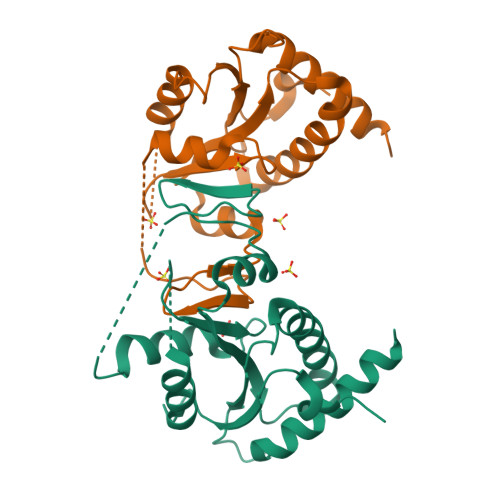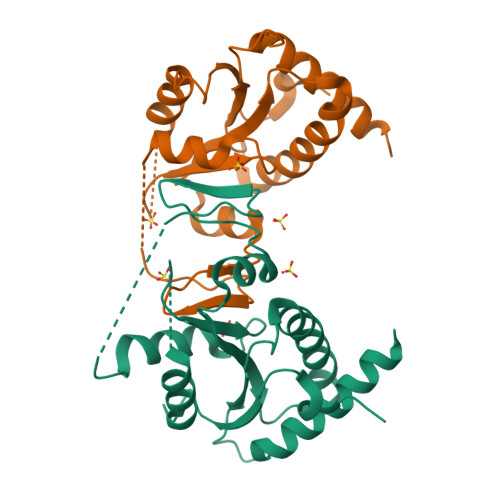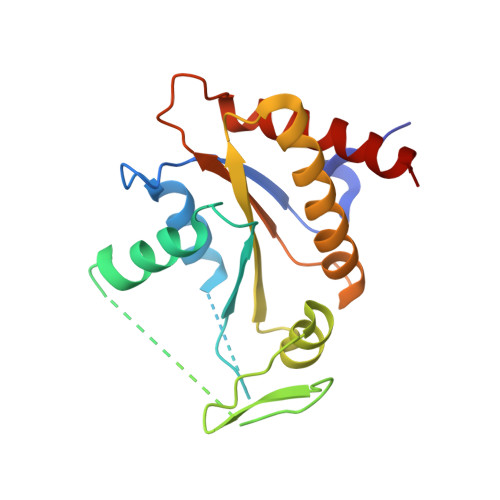Homodimerization of the G protein SR{beta} in the nucleotide-free state involves proline cis/trans isomerization in the switch II region.
Schwartz, T.U., Schmidt, D., Brohawn, S.G., Blobel, G.(2006) Proc Natl Acad Sci U S A 103: 6823-6828
- PubMed: 16627619
- DOI: https://doi.org/10.1073/pnas.0602083103
- Primary Citation of Related Structures:
2GED - PubMed Abstract:
Protein translocation across and insertion into membranes is essential to all life forms. Signal peptide-bearing nascent polypeptide chains emerging from the ribosome are first sampled by the signal-recognition particle (SRP), then targeted to the membrane via the SRP receptor (SR), and, finally, transferred to the protein-conducting channel. In eukaryotes, this process is tightly controlled by the concerted action of three G proteins, the 54-kD subunit of SRP and the alpha- and beta-subunits of SR. We have determined the 2.2-A crystal structure of the nucleotide-free SRbeta domain. Unexpectedly, the structure is a homodimer with a highly intertwined interface made up of residues from the switch regions of the G domain. The remodeling of the switch regions does not resemble any of the known G protein switch mechanisms. Biochemical analysis confirms homodimerization in vitro, which is incompatible with SRalpha binding. The switch mechanism involves cis/trans isomerization of a strictly conserved proline, potentially implying a new layer of regulation of cotranslational transport.
Organizational Affiliation:
Department of Biology, Massachusetts Institute of Technology, 77 Massachusetts Avenue, Cambridge, MA 02139, USA. tus@mit.edu



















